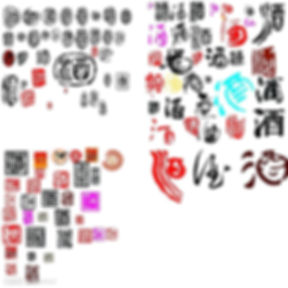Blind-tasting Torbreck 2005 and other wines

In the blind, vertical tasting on older Torbreck wines hosted by a prestigious group of good tasters in Cordis Hotel on 6 April 2017, Torbreck Runrig 2005(RP98+) came first. This result, of course, was somewhat within expectation. However, this Runrig 2005, we think, may have won by an even wider margin with more decanting.
The line-up of the evening isorbreck Runrig Shiraz-Viognier(vintages1998, 2004, 2006), Torbreck Descendant (vintages 2002, 2004, 2005), Torbreck The Factor vintage 2001 and some older Struies(2004, 2005 and 2006).

The RunRig is Torbreck's flagship wine, produce from 120- to 160-year-old Shiraz vines, and a small amount of Viognier RunRig was included in the 4th edition of Langton's Classification of Australian Wine at the "Excellent" level and was named one of Australia's 25 "benchmark" wines by Wine Spectator magazine. With no vintage scoring less than 95 points since the 1995 vintage, and no fewer than seven vintages of RunRig achieving a score of RP 99 points. Descendant is from grapes grown on the winery property from vines planted in 1994 from cuttings selected from several of the vineyards that provide fruit for RunRig. To some this is the second wine of Runrig. The Shiraz is and Viognier is co-fermented ( the usual blend is 92% Shiraz, 8% Viognier), and the wine is aged in neutral (ex-RunRig) barrels for 18 months before bottling. "Descendant" is in honour of the donor vines that provided the cuttings for this vineyard.

The Factor shares many of its old vine fruit sources with RunRig. Made from 100% Shiraz, it spends 24 months in a combination of new and neutral French oak. The manager of a Scottish highland estate is known as The Factor. While some tasters may opine that this is the 3rd wine, The Factor builds on a different orientation. The Struie. It is based on fruit sourcing within the region and is a 100% Shiraz first released in 2001. It is made from vineyard sites in the Eden Valley (approximately 40-year-old vines) and the Barossa Valley (average 60-year-old vines). The elevation of the Eden Valley is some 200 metres higher than the Barossa and the cooler climate results in a longer growing season and thus more flavour development. Differences in soil between the Eden Valley and Barossa Valley also yield more distinctive varietal flavour characteristics, lower pH and higher acidity levels in the finished wine. The Struie is aged for 18 months in a combination of old and new French oak barriques before bottling. The Struie is the name of the craggy hilltop overlooking the Dornoch Firth in the Scottish Highlands.






















